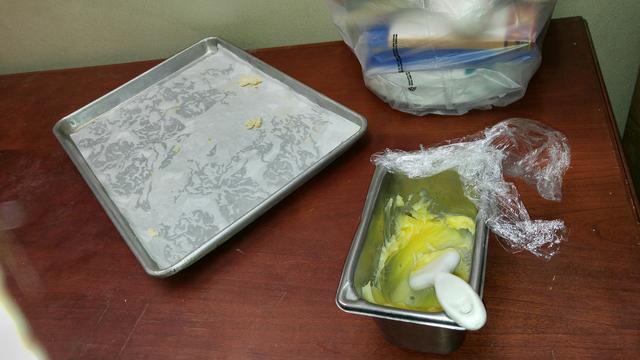Commercial Pest Services Photo Album: Yuck, commercial kitchen in New Brunswick, NJ needs to clean it up.

Rotten food all over attracts pests
Upon arrival, I met with the restaurant manager to get more information before starting my inspection and to help me target the problem, specifically, I wanted to know where pest activity was observed and how long they had been experiencing it. According to the manager, most of the activity was in the kitchen, however, some of the fruit flies, to the dismay of him and the customers, had made their way into the dining area. Fruit flies breed in decaying organic matter, and are especially common around unrefrigerated, ripening fruits and vegetables as well in in and around drains where food debris is being retained. Fruit flies have a short life span but they are prolific breeders and populations can skyrocket in no time.

Just a mess that Roaches Love
Roaches are among the most resilient of insects. They find cracks and crevices to hide, and they also breed rapidly. Because they scurry away with light, roach infestations can go unnoticed until they are severe.

Food in garbage Breeds Flys
I began my inspection looking for the harborage areas and breeding grounds that fruit flies and roaches often exploit. More often than not, these areas allow the insects to thrive by giving them shelter, moisture, and food.

Garbage everywhere is Insect food
For any business, these infestations are a problem, but for a restaurant, they are critical. Timely resolving these pest infestations can mean the difference between operating a business and having it temporarily shuttered by the country or municipal health department because of unsafe or unsanitary conditions. At Cowleys, we partner with many restaurants to help prevent insect and rodent infestations, and ensure that they get resolved in their earliest stages should they occur.

Broken tiles house roaches
The source of most pest infestation problems with commercial businesses, especially restaurants, are underlying sanitation problems that need to be addressed and corrected by the kitchen staff. For a thorough inspection, you need to be active - looking behind and under kitchen equipment and appliances - and I always carry my flashlight so I can see what's going on in those dark, hidden places that insects prefer. It didn't take long to determine why this facility had thriving roach and fruit fly populations. Almost everywhere, I found food debris and garbage. There was also missing and cracked tiles. In a kitchen, these gaps and spaces on the floor, because they trap and retain food debris, are ideal harborage areas for insects. For sanitation purposes, kitchen floors must be easy to clean without "ruts and gullies" that are magnets for food debris.

Food left out bring in bugs
I wanted the manager to see the results of my inspection with his own eyes so that he could relay the problem to the kitchen staff and see that protocols are instituted to prevent these sanitation deficiencies. He assured me that his staff would address both the sanitation issues as well as the structural issues with the floor tile immediately. With pest infestations, problem identification is as important as treatment for successful long-term pest control.